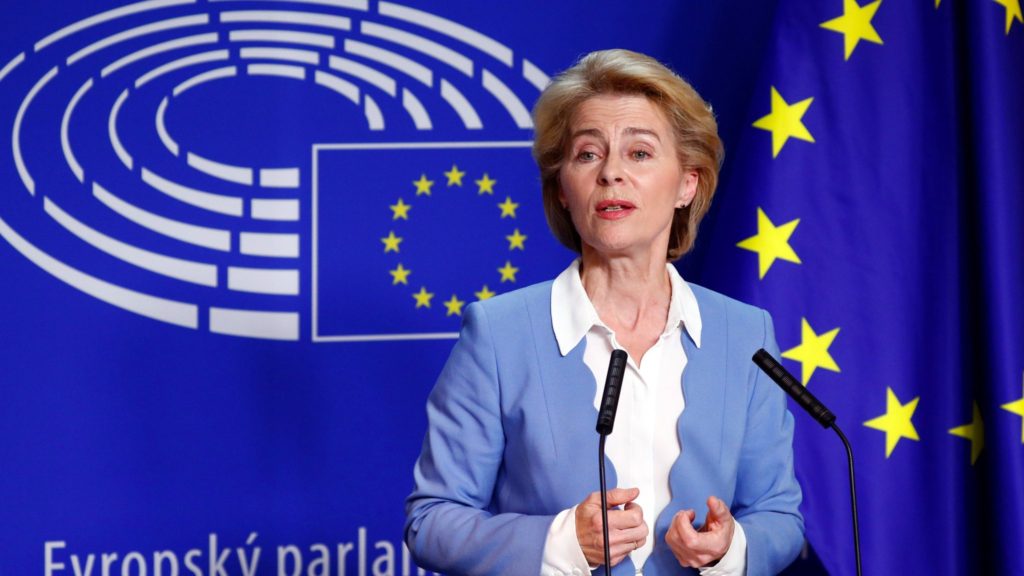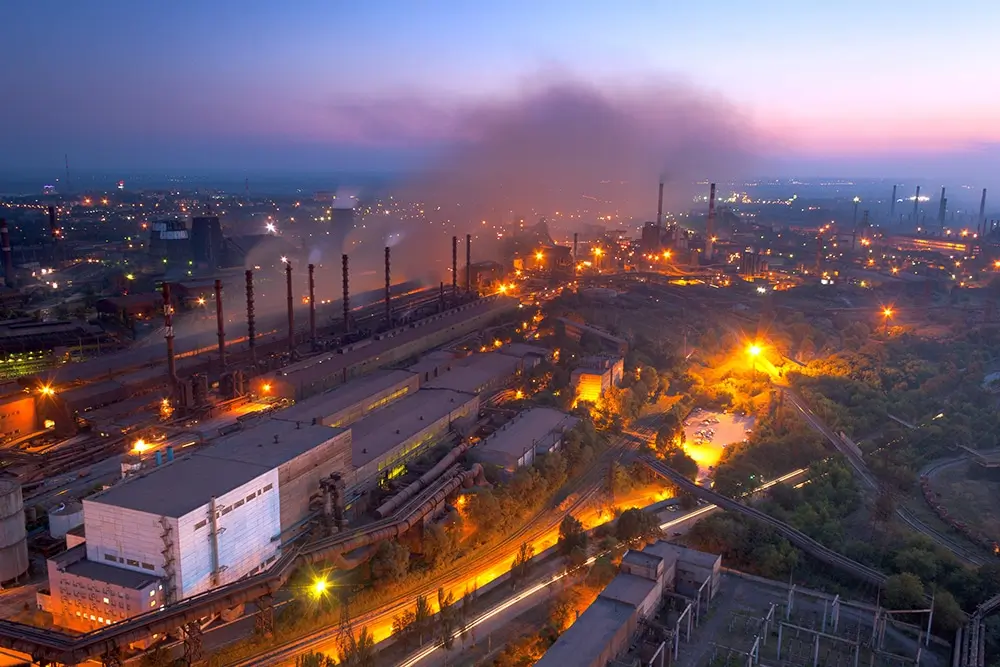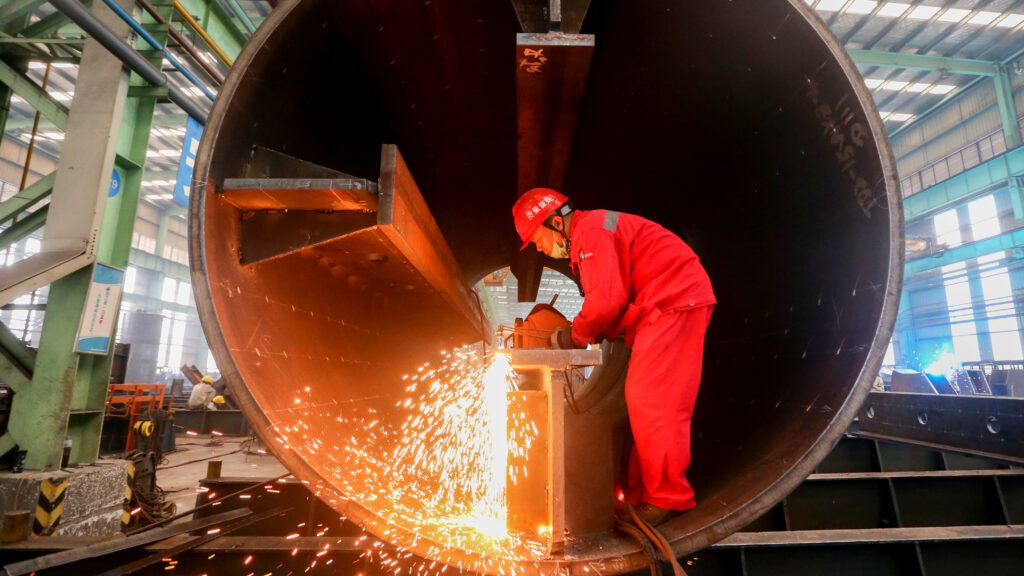Nippon Steel Corp. has defended the whopping 142% premium it’s paying for United States Steel Corp., as the Japanese company seeks to reinforce its position as a global titan, using expansion abroad to counter a weak domestic outlook.
The $14.1 billion acquisition, announced on Monday, creates the world’s second-biggest steel producer with plants stretching from Slovakia to Osaka and Pennsylvania. But it came as a surprise — the Japanese bidder hadn’t previously been considered a front runner, and the offer is more than double the level US Steel shares were trading at before it announced unsolicited proposals and a strategic review four months ago.
Even dismissing the runup in US Steel’s stock, the $55-a-share offer represents a 40% premium to Friday’s close. The deal is also all cash, with Nippon Steel paying significantly higher than the roughly $33 a share offered by Cleveland-Cliffs Inc. in August.

“We want to complete a global network for a new era in the industry,” Eiji Hashimoto, Nippon Steel’s president, told the press in Japan on Tuesday, adding that the US is an economic leader. “We believe that there is sufficient economic rationale.”
This is the boldest effort by Nippon Steel, Japan’s top producer, to shift focus abroad as demand at home dwindles. Japan’s crude steel manufacturing has been on a downward trend, with production falling to about 96 million tons in fiscal 2021 from about 122 million tons in fiscal 2007.
The transaction provides a large foothold in the American steel industry, and Nippon Steel’s footprint doesn’t overlap with US Steel, according to Hashimoto. But it’s also a huge bet on growth — chiefly that US demand will benefit from rising infrastructure spending. There were no cost synergies detailed in the company’s presentation.
“The acquisition of US Steel is a bigger move than all of Nippon Steel’s previous acquired capacities combined, building on the confidence over a subsidy-fueled manufacturing renaissance in the US,” said Yuchen Huo, an analyst at BloombergNEF.
Since the introduction of the Inflation Reduction Act, interest in clean-tech manufacturing in the US has shot up across electric vehicles, solar and wind components manufacturing, fueling future demand for steel, she said.
Still, the all-cash transaction will stretch Nippon Steel’s balance sheet, and could lead to impairments if the steel cycle deteriorates, according to analysts including Than Ha Pham at Jefferies. It may also require a capital raise.
With earnings before interest, tax, depreciation and amortization for this year expected at about $2 billion, Nippon Steel’s price for the company — including debt — implies it is paying the equivalent of 7.4 times that. US Steel’s peer group, made up primarily of American companies including Cleveland-Cliffs, trades at around 6 times.

Moody’s senior analyst Roman Schorr said the acquisition presents financial and execution risks, but noted that Nippon Steel has shown significant progress in improving profitability through cost cuts and price hikes.
Nippon Steel sees no issue with capital, Executive Vice President Takahiro Mori said in the press conference. “There are multiple options to make a permanent loan, and we will assess what is most appropriate at the time given the market conditions and other factors,” he said.
The tie-up, in one of the most politically sensitive sectors, could also be a lightning rod in Washington, with at least three US senators already opposing the takeover by a foreign company of an American icon with roots that trace back to 1901. And there are recalcitrant workers too, with the United Steelworkers urging US regulators to scrutinize the deal, citing concerns over employees.
Nippon Steel, which has said US Steel’s commitments with employees would “continue to be honored,” said the company would treat the union with care. “We believe we can gain their understanding through careful dialogue,” Hashimoto said in the press conference.
Reshaping Industry
The unexpected emergence of Nippon Steel in the US Steel saga is set to reshape the industry — with Japan back in the front-seat.
Japan’s rapid economic growth in the 1970s and 1980s, and its booming demand for metals, propelled Nippon Steel to the world’s largest steel producer at the time. However, the country’s stagnant economic growth from the 1990s and the rise of China as a major producer reduced Nippon Steel’s importance in the industry.
The company was impacted in 2020 when steelmakers globally were hit by weaker demand and trade war tensions that hammered economic growth. Hashimoto promised to conduct “urgent structural reform” that year, and led capacity cuts.
“The deal will strengthen the Japanese steel sector’s position in the global market,” Xu Xiangchun, an analyst with Mysteel, said by phone from Shanghai. Meanwhile, China — which is excluded from the US due to trade restrictions — will focus more on its domestic market and the emerging world, Xu added.
Nippon Steel is not only making a big bet on the future of the steel industry, but also on the clean-energy transition and the future of the US auto industry, analyst Mark Chadwick wrote in a note on Smartkarma. Still, the cost of decarbonization looms, he said.
Green Effort
The steel industry, a major polluter that makes up about 8% of global emissions, is under pressure to reduce emissions, and companies are struggling to break their reliance on coal-fired blast furnaces.
Nippon Steel, which set a target to hit net-zero emissions by 2050, has been looking to break out abroad to reach its pollution reduction goals, announcing earlier this year it was examining sites in Australia and Brazil for a proposed green steel project. The company said a combination with US Steel would accelerate the commercialization of green technology in the industry.
Shares of Nippon Steel closed down 2.8% in Tokyo on Tuesday. The stock is still up 37% for the year to date. US Steel jumped 26% to close at $49.59 in New York on Monday.
When asked his thoughts on US Steel’s overnight share move and Nippon Steel’s drop on Tuesday, Hashimoto said he “doesn’t care about short-term stock moves.”







